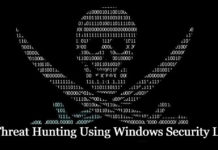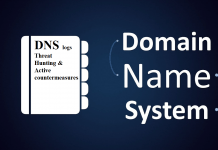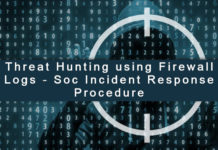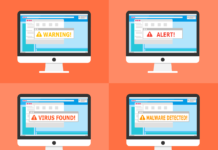Cybersecurity is all about making the right calls at the right time. Do you patch a vulnerability immediately or wait to test for compatibility issues? Should you shut down a system at the first sign of a threat or monitor it for more intel? Every decision carries risk.
Act too soon, and you might disrupt operations; wait too long, and attackers could strike. Cybersecurity professionals must constantly assess threats, balancing urgency with caution. Knowing when to take action and when to hold back keeps systems safe. Below, we’ll explore how to manage cyber risks confidently.
Identifying and Assessing Cyber Risks
Cyber threats are everywhere, and knowing how to spot and assess risks is key to staying ahead of attackers. However, not all risks are the same—some require immediate action, while others need careful monitoring. So, how do cybersecurity professionals decide what to prioritise?
It all starts with identifying vulnerabilities. This includes outdated software, weak passwords, or employees who may fall for phishing scams. Once a risk is spotted, the next step is assessing its impact. How likely is an attack? What damage could it cause? The answers help security teams decide whether to act now or prepare for a potential future threat.
For instance, due to their popularity and financial transactions, strategic games like roulette and other online games are prime targets for cyber threats. Understanding how to identify and assess these risks is crucial for both players and operators.
The key is balance. Cybersecurity isn’t about eliminating all risks but managing them wisely. Companies can protect their data by carefully identifying and assessing threats without disruptions.
When to Act Fast: Mitigating Immediate Threats
In cybersecurity, timing is everything. When immediate threats emerge, swift action can be the difference between a minor hiccup and a major catastrophe. But how do we discern when to leap into action and when to exercise caution?
Consider zero-day vulnerabilities, those unforeseen security flaws hackers exploit before developers can patch them.
Upon discovery, it’s imperative to implement temporary safeguards until a permanent fix is available. Similarly, active phishing campaigns targeting employees necessitate immediate alerts and enhanced email filters to thwart potential breaches.
Organisations should have a comprehensive incident response plan to mitigate such immediate threats effectively. This plan ensures that everyone knows their role during a crisis, leading to faster and more coordinated responses.
Leveraging automated detection systems also plays a crucial role; these tools can identify and respond to threats in real time, reducing the window of opportunity for attackers.
However, while rapid response is vital, avoiding hasty decisions that could lead to further complications is equally important. For instance, immediately shutting down a compromised system without proper analysis might result in data loss. Therefore, assessing the situation thoroughly before acting is essential.
In cybersecurity, knowing when to act swiftly and when to deliberate can safeguard an organisation from significant threats. We can securely traverse the digital terrain if we remain alert and organised.
When to Play It Safe: Avoiding Unnecessary Disruptions
In cybersecurity, knowing when to act swiftly and when to exercise caution is crucial. While rapid responses are essential during active threats, it’s equally important to avoid unnecessary disruptions that can arise from hasty decisions.
For instance, immediately implementing a newly released security patch without thorough testing might seem proactive.
However, this approach can backfire if the patch is incompatible with existing systems, leading to unexpected downtime or functionality issues. Such disruptions can be more detrimental than the potential threat the patch aims to mitigate.
Effective risk management involves a balanced approach. Conducting comprehensive risk assessments helps identify vulnerabilities and evaluate their potential impact. This process allows organisations to prioritise and address threats systematically, allocating resources efficiently.
Additionally, implementing robust security controls, such as multi-factor authentication and regular system audits, can reduce the likelihood of breaches without causing unnecessary interruptions to daily operations.
Organisations can maintain security without compromising productivity by thoughtfully assessing risks and choosing appropriate mitigation strategies. This balanced approach ensures that cybersecurity measures enhance, rather than hinder, business continuity.
The Role of Automation and AI in Risk Management
Automation and artificial intelligence (AI) are transforming risk management by enhancing efficiency and accuracy. AI’s ability to process vast amounts of data enables organisations to identify patterns and predict potential risks more effectively.
For example, AI-driven automation can improve the accuracy of risk assessments, enable real-time monitoring, and optimise responses to emerging threats.
Moreover, AI can automate routine tasks such as data entry and report generation, freeing valuable time for risk managers to focus on strategic activities. This shift allows for a more proactive approach to risk management, as AI systems can continuously monitor for anomalies and alert teams to potential issues before they escalate.
However, it’s essential to approach AI integration thoughtfully. Overreliance on AI tools without proper oversight can lead to unforeseen challenges, including potential impacts on employee well-being.
Therefore, while AI offers significant advantages, maintaining a balance between technological innovation and human judgment is crucial for effective risk management.
Incorporating automation and AI into risk management strategies streamlines processes and enhances an organisation’s ability to anticipate and mitigate risks, leading to more resilient operations.
Final Thoughts
Cybersecurity is about managing risks wisely and balancing quick action with caution. Acting too fast can disrupt operations, while delays invite attacks. Organisations must identify threats, respond swiftly, and use AI and automation effectively. Mastering this balance strengthens systems, ensuring resilience. Stay vigilant, stay prepared, and protect what matters most.



































